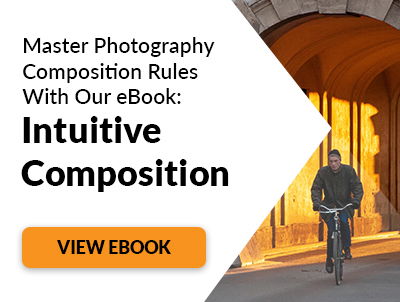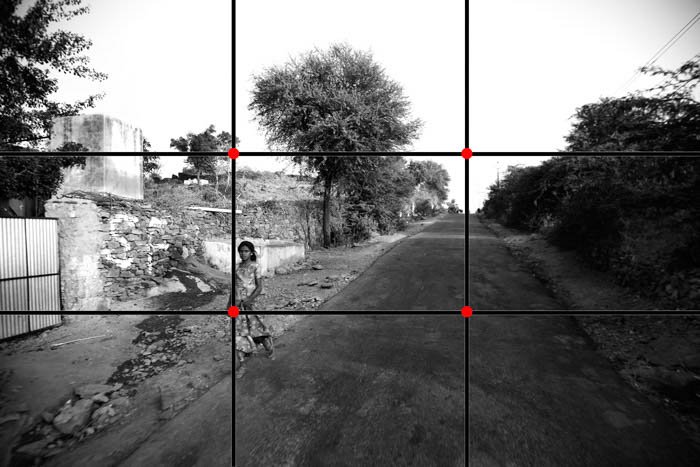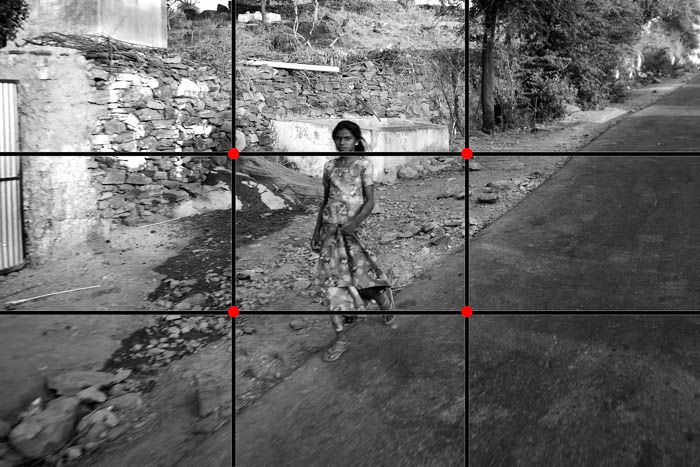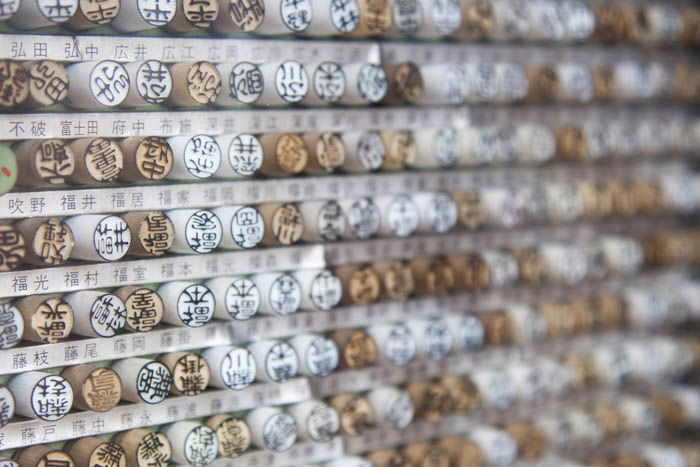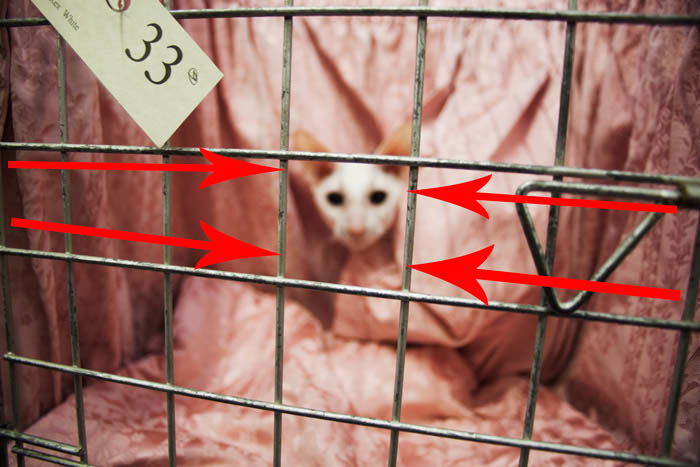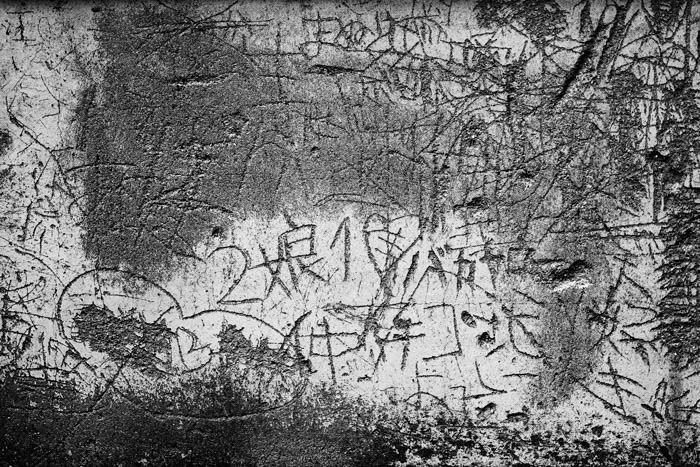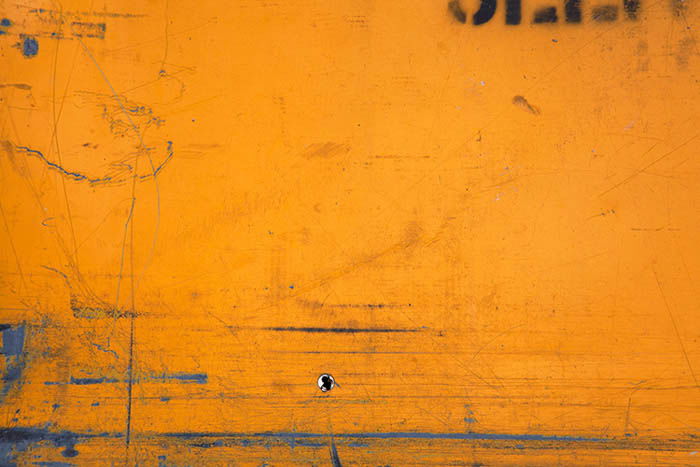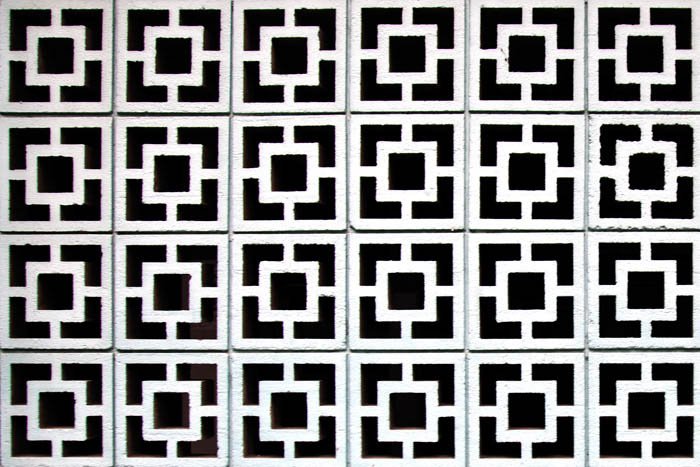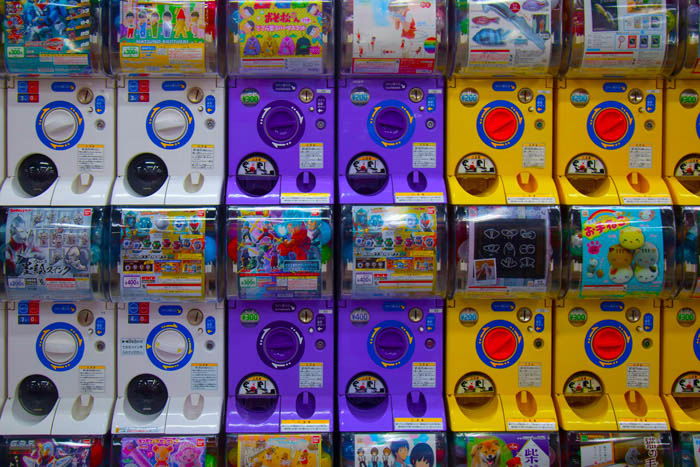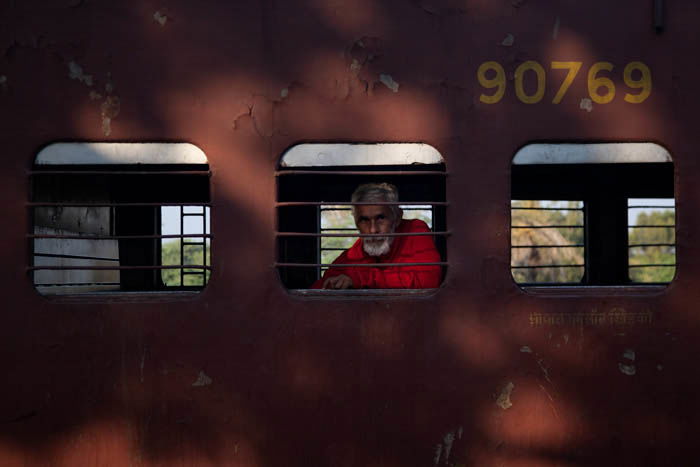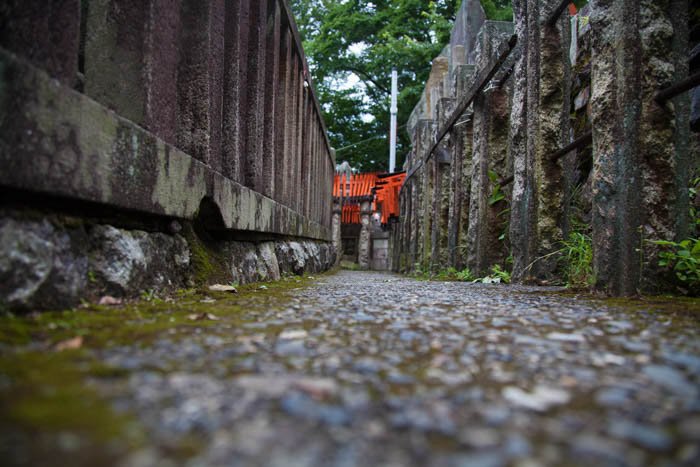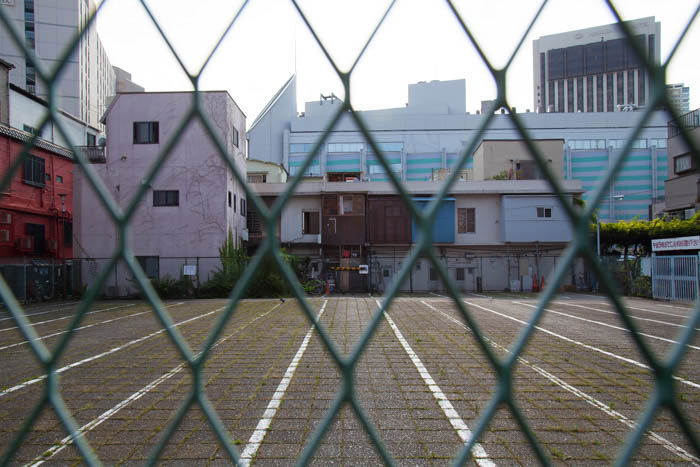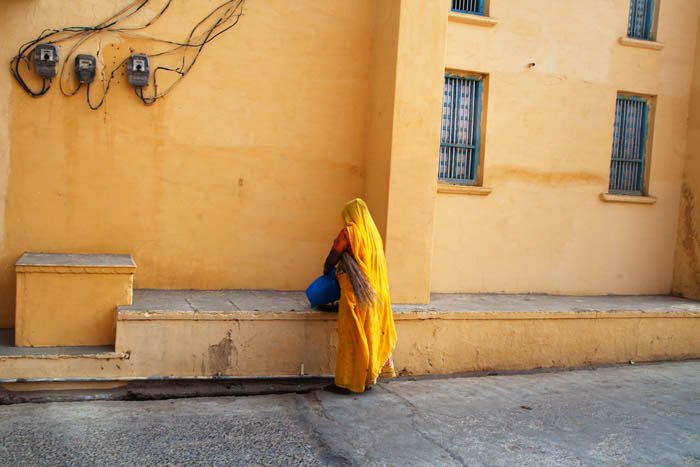Here are ten tips to help you improve your street photography composition:
Street Photography Composition: Utilizing the Rule of Thirds
The rule of thirds is one of the most commonly used composition guidelines in photography. This rule exploits the human eye’s natural tenancy to gravitate to a certain area. By mentally breaking an image down into parts, you’ll become much more aware of subject placement. This will allow you to take control of the focal points in an image. To apply the rule of thirds, imagine you’re dividing the image you see through your viewfinder into three rows and three columns, or nine equal parts. The inner intersections of the grid shows the four points that a viewer’s eye tends to seek out. Placing points of interest at the intersecting points creates balance and maximises viewer impact. In an image comprised of multiple subjects, the bottom right point is the strongest and the upper left point is the weakest. You can see examples of this in theatre and on television. This way, you can emphasise a single subject depending on their placement. When an object is alone in an image, the strongest position is the left-hand line. This happens because western culture is predisposed to reading an image from left to right. You may want to take this into account when photographing for cultures that read right to left. In the case of portraiture, another general rule is that your subject should be on the opposite line of the direction that they’re looking in. If your subject is looking to their left, they should be positioned to the right of the frame. This gives the photo more depth, and avoids making the subject look bored, staring off into the distance.
Negative Space
Sometimes what you leave out of a photograph can be more important than what you leave in. As photographers, we choose what to include and exclude in a frame. Incorporating less into a photograph can give a subject emphasis and breathing space to capture and hold a viewer’s attention. Positive space is the subject while negative space is the unoccupied area in an image. Too little negative space results in cluttered photos, with every component in the image vying for attention. In the image above, the negative space puts greater emphasis on the subject, in this case, the dove taking flight. The motion of the subject is offset by the area in which the eye can rest, which offers greater interest to the subject at hand without tedium. The negative space also introduces a sense of mystery. Where does the image end? Where was it taken? And where is the dove going? A more cluttered image would deliver too much information, turning an observational photograph into a casual, every-day image.
Depth of Field
There are endless opportunities to explore depth of field in street photography. Knowing how your aperture, focal length and focusing work in conjunction to affect depth of field is a must for any semi-serious photographer. Like the human eye, a camera can only focus its lens at a single point. However, there will still be an area that stretches in front of and behind this single focus point that appears sharp in an image. This zone is the depth of field. The depth of field isn’t a fixed distance. It changes in size depending on your camera settings. And depending on your subject, you may need a shallow (where only a narrow zone appears sharp) or deep (where more of the picture appears sharp) depth of field. As an example, you would generally want a landscape photograph to be uniformly sharp or with a deep depth of field. When you want to draw attention to a particular detail in an image, or add a greater sense of depth, you can use a shallower depth of field. Setting your camera to a wide aperture of F/2.8 will give you a shallower depth of field, whereas an aperture of F/22 will give you a deeper depth of field. By combining your aperture and focus settings, you can create dynamic images that tell a greater story.
Zone Focusing
One important aspect of depth of field in street photography composition is zone focusing. Capturing candid subjects while maintaining sharp focus is one of the most difficult aspects of street photography. While you can use the auto focus setting on your camera, it is rarely fast enough to capture an image the very second you see it. Zone focusing is pre-focusing your camera to a certain distance away and then photographing subjects as they enter that range. To zone focus, you’ll need a lens with a manual focusing meter that will show you the distance that the camera is focused at. Simply set your lens to manual focus and decide how close you would like your subjects to be sharp, relative to the camera. It may take some time to determine the exact lengths of the focal range. I set up a tape measure to figure out the distance of the focal range. This gives me an adequate idea in the field.
Leading Lines
Leading lines are another great way to add depth to your street photography. It means using lines in an image to guide the viewer’s eye around a photograph. They add a new dynamism that gives an image a sense of direction or flow. It can also lend order or disorder to an image, affecting the emotion of the photograph overall. Road stripes, hand rails, fences, bridges, shadows, horizons, footpaths and buildings are common examples of leading lines used in street photography composition. More organic sources, like tree branches and pointed fingers and gestures can also count as leading lines.
Texture
As one of the five main senses, texture connects a viewer to the world. Visual, haptic imagery draws on powerful associations and creates an interesting and stimulating piece of work. In street photography, there are plenty of opportunities to photograph subjects with texture. Some examples include weathered boards, peeling paint or cute fluffy kittens and bunnies. The easiest way to convey texture within a photograph is to focus on detail. Finding textures in street photography is easy, there are hundreds of examples surrounding us at any given time. But finding an interesting textural piece worth photographing is a little harder. Try and concentrate on eye catching colors or patterns and investigate the make-up of the city. Once you start seeking out these textures, your eye will become trained to spot potential photographs more readily.
Pattern
Patterns come in endless shapes and sizes, but they all fall under the heading of repetitious subject matter. Pattern can provide order to a scene or add to the chaos of our urban landscape. Because humans are hard-wired to identify pattern, there is something both soothing and unsettling about pattern. They make us wonder about the rhythm of our environment, inviting our eyes to dance across the image and then back again. In street photography, patterns can be shapes, colors or objects of organic or manmade origin. Manmade patterns like brickwork, stairs, car parks or buildings are a great place to start. Soon you’ll find that, just like with texture, your photographic eye will quickly become trained to see the world through pattern. It’s a great way to refresh your photographic style.
Framing
Framing for photography composition creates a self-contained image, like a photo-within-a-photo. Essentially, you are crafting a frame within a frame to deliberately bring focus to a subject, adding narrative and a sense of voyeurism. Framing makes use of design skills to add an extra layer to an image. You can also use it to mask less attractive areas of a photograph, and direct the viewer’s eye straight to the points of interest that make up the image. Composing an image by making use of framing can take a little bit of scouting around. Get started by seeking out windows and doors, as they are some of the more abundant frames found in street photography. Waiters bustling in and out of doors to serve customers, public servants peeking out of windows to catch a ray of sunshine, you’ll find that a lot can happen, even in the most confined of spaces in the urban landscape. Framing these events adds a layer of importance or weight to the subject.
Perspective
Has someone ever suggested you change your perspective on a situation? Sometimes approaching something from a different angle can reveal a subject in a whole new light! It’s the same with photography composition. Unusual perspectives impact the experience of both the viewer and the photographer in a unique and engaging way. Perspective involves training your photographic eye to recognise unique opportunities and to respond to them in interesting ways. If you find yourself getting stuck for inspiration, try placing your camera on the ground and take a few shots. Perspective means getting physical with your photographic practice and remembering that the perspective of a photograph is always a choice. Don’t waste the opportunity to make the most of a shot!
Color
To go for a color or a black and white image is a compositional choice and each has its pros and cons. Color has the power to signify time and emotion through a single or combination of hues. Just as we associate warm colors like red and orange with comfort or heat, we relate to the colors in a photograph. This provides the viewer with clues about the image to create a more immersive experience. Color also has the power to grab a viewer’s attention. This is because it appeals to our evolutionary tendency to seek out and respond to intense colors. If you find that the relationship between distinct colors in your image is important or if you are trying to indicate a certain season or emotion, color would be your best bet. However, if your image looks too busy, with too many colors happening at once, you may want to consider converting to black and white.
Black and White
Due to its association with documentary and street photography, black and white images generally evoke a sense of sensuality or seriousness. A black and white color scheme also appears to be more timeless than color images. They are free from color schemes associated with particular types of film, processes, or trends. This timelessness is important in street photography composition because it helps maintain a sense of relevance and poignancy over history. Many photographers prefer black and white images because they distance the subject from reality. In street photography, an image of the world in monochrome is foreign to our color vision. This gives us a reason to pause and investigate an image more carefully. Due to the lack of cues that color photography provides, the viewer will tend to pause on a black and white photograph to read what is happening in the image. This slower viewing time means that a photographer has more time to communicate with a viewer.
Conclusion
While it may be true that rules are meant to be broken, getting to know photography composition is an important way to hone your photographic skills. Understanding composition will help you create more compelling and naturally balanced images for street photography and have fun while doing it! If you want to learn even more about urban photography, check out our Complete Guide to Street Photography.

